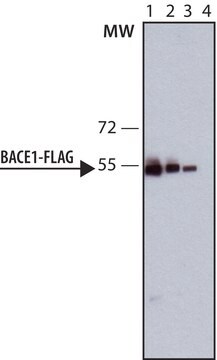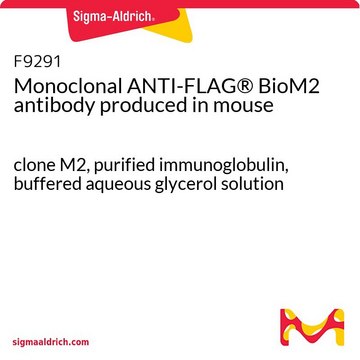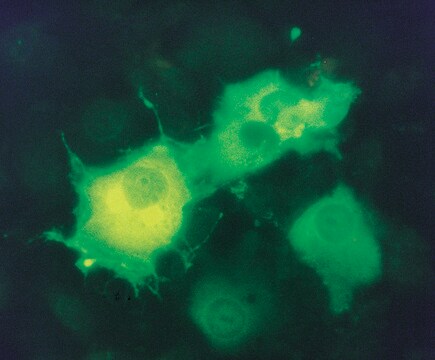SAB4301135
Anti-FLAG Tag antibody produced in rabbit
affinity isolated antibody
Sinonimo/i:
Anti-ddddk, Anti-dykddddk
About This Item
Prodotti consigliati
Origine biologica
rabbit
Livello qualitativo
Coniugato
unconjugated
Forma dell’anticorpo
affinity isolated antibody
Tipo di anticorpo
primary antibodies
Clone
polyclonal
Stato
buffered aqueous solution
Reattività contro le specie
all
Concentrazione
1.4 mg/mL
tecniche
western blot: 1:1000-1:5000 (Cell Lysate)
Isotipo
IgG
Sequenza immunogenica
DYKDDDDK conjugated to KLH (synthetic peptide)
Condizioni di spedizione
wet ice
Temperatura di conservazione
−20°C
Categorie correlate
Descrizione generale
Specificità
Immunogeno
Applicazioni
- western blotting
- co-immunoprecipitation
- immunofluorescence studies
Western Blotting (1 paper)
Caratteristiche e vantaggi
Stato fisico
Note legali
Esclusione di responsabilità
Non trovi il prodotto giusto?
Prova il nostro Motore di ricerca dei prodotti.
Codice della classe di stoccaggio
10 - Combustible liquids
Classe di pericolosità dell'acqua (WGK)
WGK 1
Punto d’infiammabilità (°F)
Not applicable
Punto d’infiammabilità (°C)
Not applicable
Scegli una delle versioni più recenti:
Certificati d'analisi (COA)
Non trovi la versione di tuo interesse?
Se hai bisogno di una versione specifica, puoi cercare il certificato tramite il numero di lotto.
Possiedi già questo prodotto?
I documenti relativi ai prodotti acquistati recentemente sono disponibili nell’Archivio dei documenti.
I clienti hanno visto anche
Il team dei nostri ricercatori vanta grande esperienza in tutte le aree della ricerca quali Life Science, scienza dei materiali, sintesi chimica, cromatografia, discipline analitiche, ecc..
Contatta l'Assistenza Tecnica.














